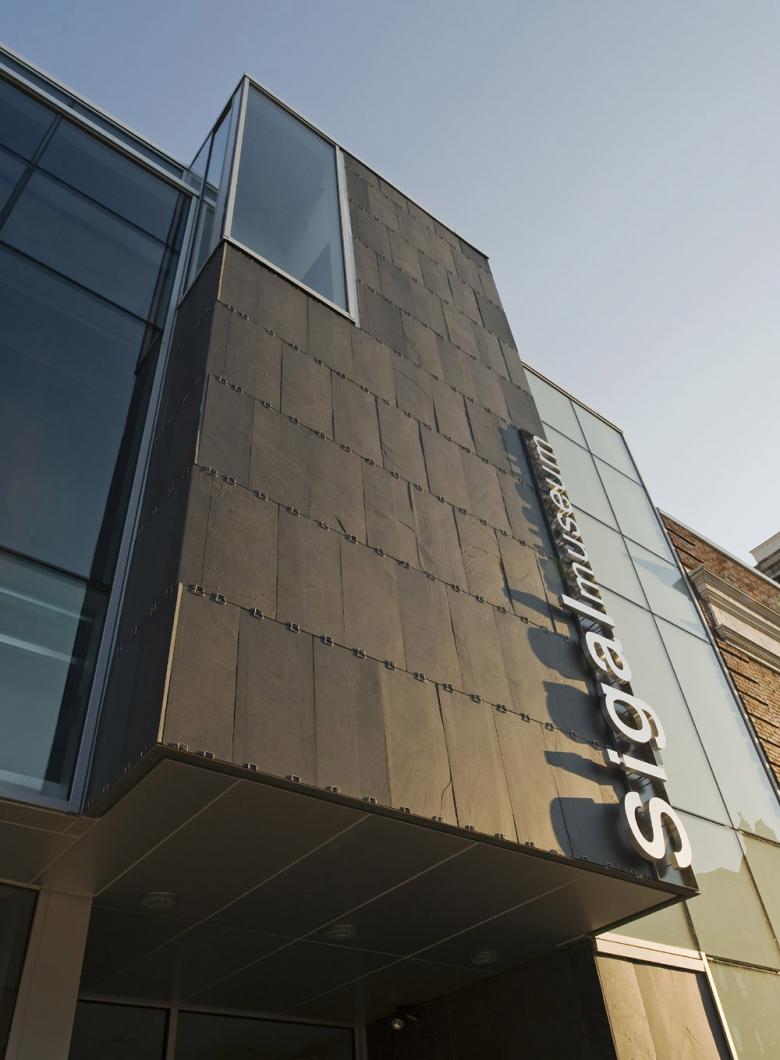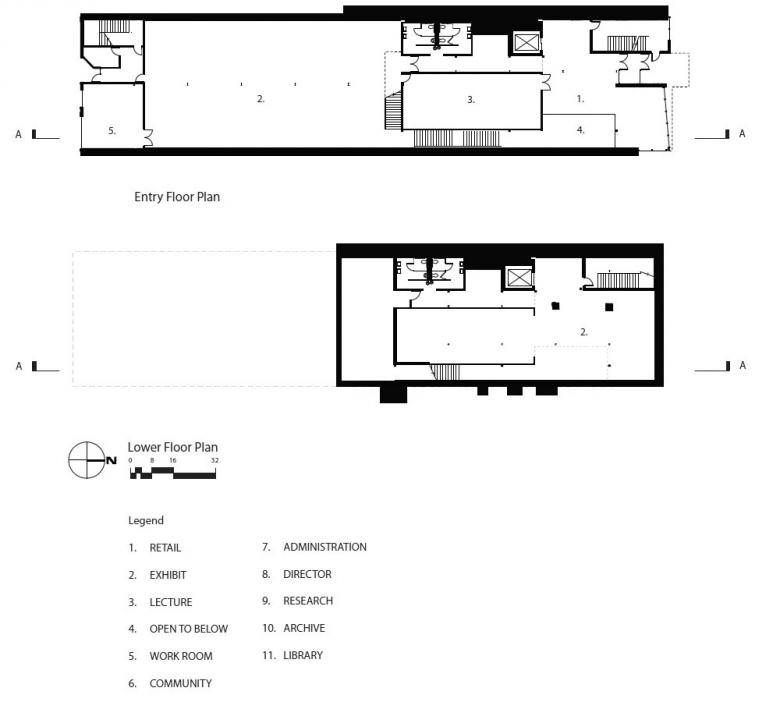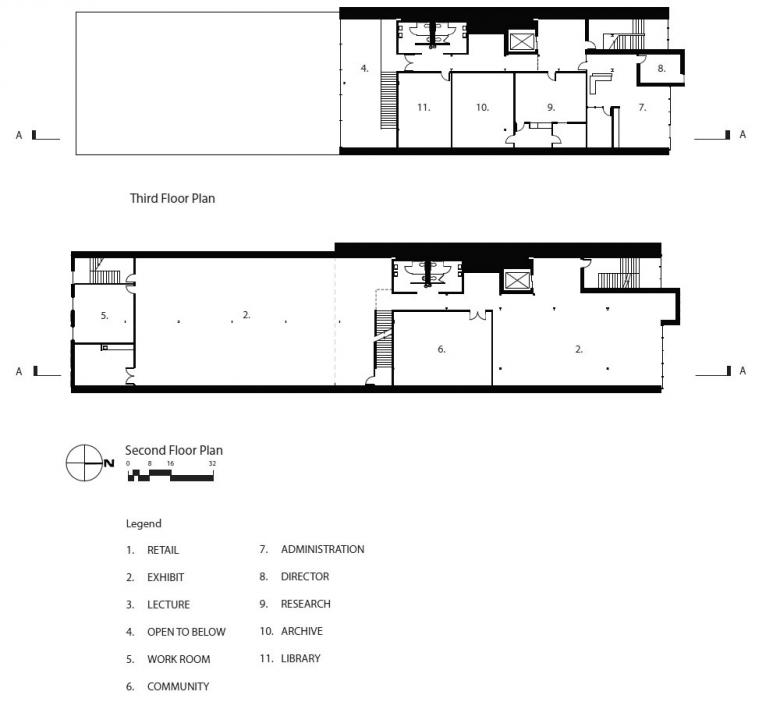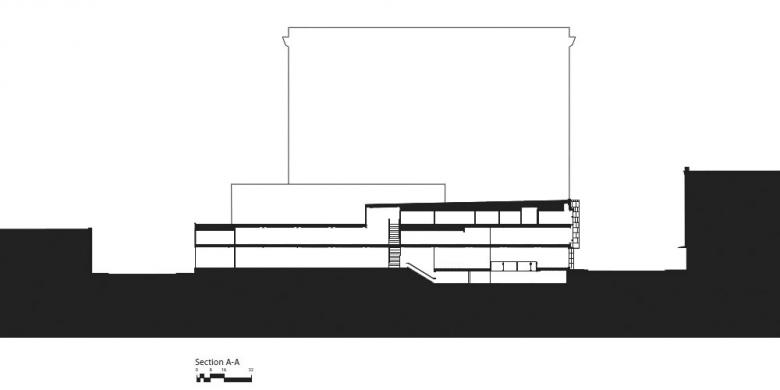Sigal Museum
Sigal Museum
Located in Easton, the seat of Northampton County, Pennsylvania, the Sigal Museum is one of four museums operated by the Northampton County Historical & Genealogical Society. It is home to "significant collections of pre-European settlement artifacts, decorative arts and textiles, farming implements and colonial furniture," and also includes a library and functions as a cultural center. The design by Spillman Farmer Architects is contemporary yet respectful of its historical neighbors. Design Principal Joseph N. Biondo answered some questions about the project.
What were the circumstances of receiving the commission for this project?
We completed a visual arts building for Lafayette College in downtown Easton, Pennsylvania. The project was an adaptive reuse of a turn of the century auto dealership into a collaborative learning environment for visual arts. The museum stakeholders appreciated our response to program, the urban condition and the transformation of an existing structure. We demonstrated a keen understanding for adaptive reuse and thoughtfully repurposing existing buildings. They determined that we were the most appropriate team to collaborate with to realize their vision.
Can you describe your design process for the building?
Our design process is consistent with our mission which is to empower people to make inspiring, thought provoking and responsible decisions related to the built environment. Through this process, we explore each project’s unique opportunity for honest expressive solutions specifically suited to the building’s site and use. Our priority is to develop an architecture that is rational, leveraging a distinct and honest building vocabulary that shows clear evidence of how and why it was made. We are deeply influenced by place and choose honest materials which honor the location and achieve a lasting patina as they age.
How does the building compare to other projects in your office, be it the same or other building types?
Regardless of building type or scale, our designs are similar in many ways. They all consist of a clear diagram, rational plan; the buildings are tactile and material based, and contains thoughtful detailing throughout. Our buildings are distilled to what is absolutely necessary and show clear evidence of how it is made in an effort to become a learning experience for the users.
How does the building relate to contemporary architectural trends, be it sustainability, technology, etc.?
Although we have become a fashion conscience society, our buildings do not rely on contemporary trends. They are guided by the fundamental principles of critical regionalism over style, or abstract concept. In addition, we are deeply influenced by the Shaker Philosophy of Design which is “do not make something that is not necessary or useful…..” The architecture we produce attempts to be authentic, resourceful and is fundamentally grounded in the unique history of each context.
Are there any new/upcoming projects in your office that this building’s design and construction has influenced?
We have many exciting projects of various scales and building type in design. Each project is influenced by the explorations of the last. Our architecture favors the tectonic, tactile and buildable materials harvested from the earth. We are fascinated with building materials and systems and have an unending curiosity for taking ordinary materials to extraordinary results. We will continue to push toward an architecture that is clear, precise and honest.
Email interview conducted by John Hill.
Sigal Museum
2010
Easton, PA
Client
Northampton County Historical & Genealogical Society (NCHGS)
Architect
Spillman Farmer Architects
Bethlehem, PA
Design Principal
Joseph N. Biondo, AIA
Managing Principal
James Whildin, AIA
Project Manager
Randy Galiotto
Project Team
Michael Metzger, AIA
Wayne Stitt, AIA
Joanne Titcomb
Brian Brandis
David Wrigley
Sierra Krause
Deirdre Kwiatek
Construction Manager
Alvin H. Butz, Inc.
Building Area
31,626 sf





